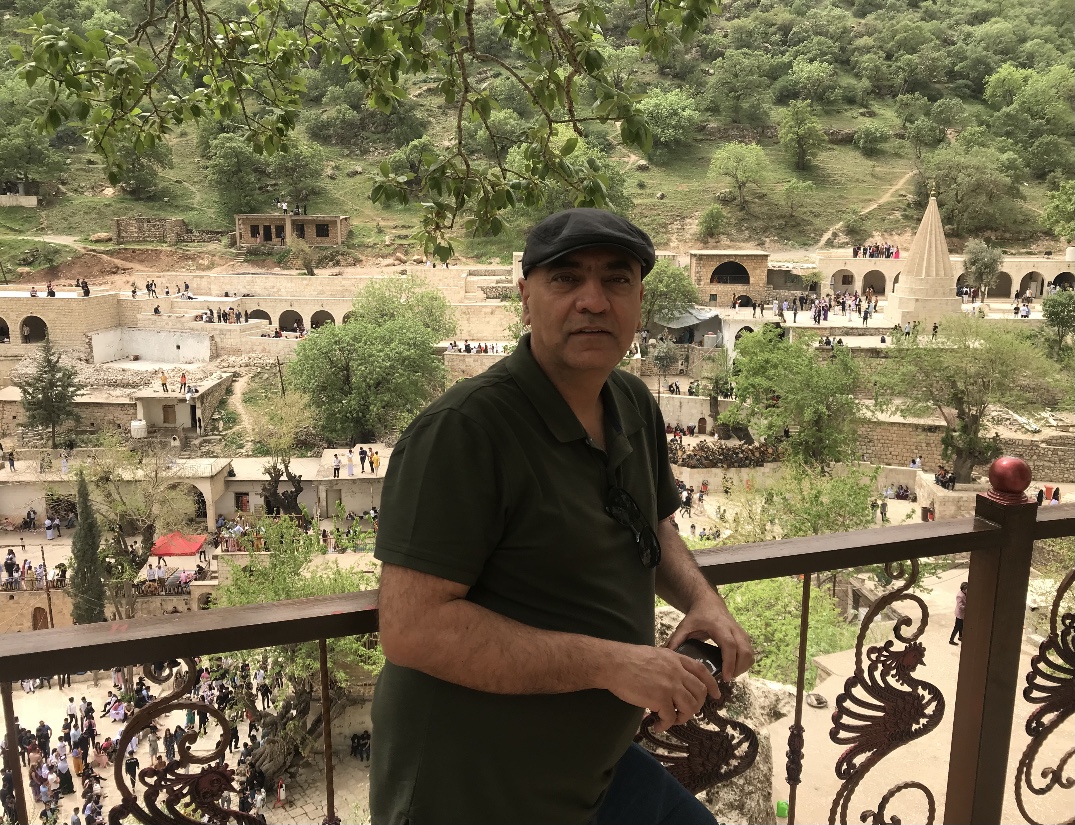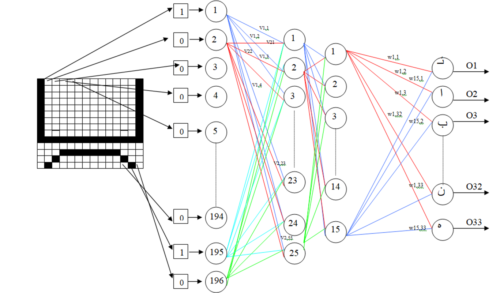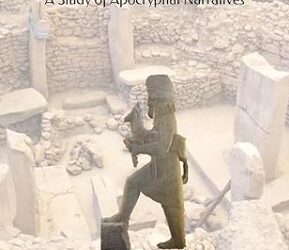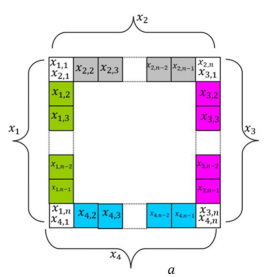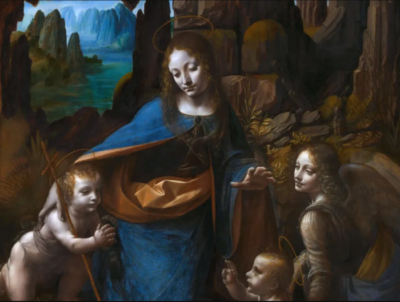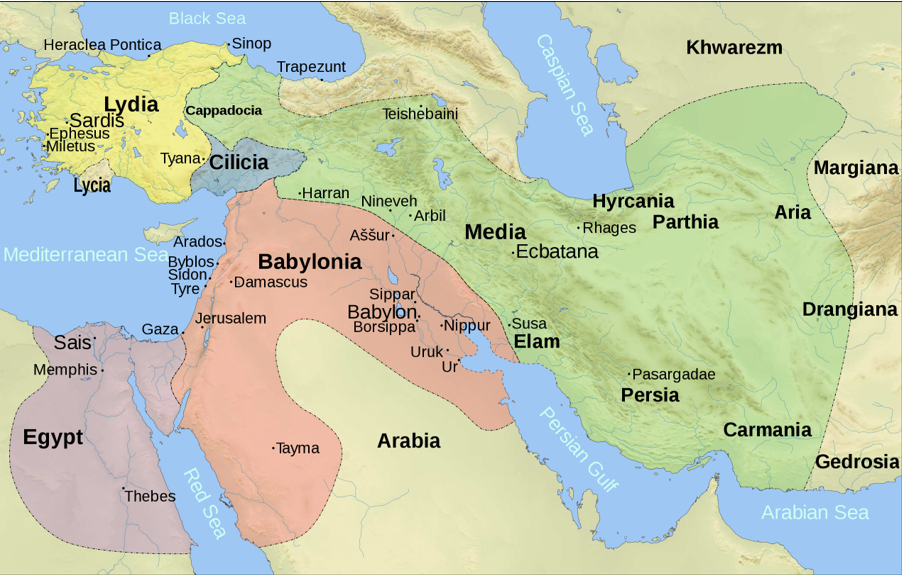Introduction
Current works tends to explore the differences and similarities of the ways in which Islam and Christianity see “Mary”, one of the significant figures in both sets of beliefs.
Gospel mentions Mary less than the Qur’ān, however, both the religions have high beliefs of respect, purity and piousness of her. Both religions believe her as the mother of “Jesus/ʿĪsā”, born in the honourable family of Prophet Abraham’s descendants.
Both religions believe entirely in the piousness of Mary as she conceived as a virgin by the will of God, as it was mentioned in the Qur’ān [18, 21:90] and Gospel [21, Matthew: 1:23].
The present essay will be working in the light of the Qur’ān and Gospel to find the differences and similarities in the views of Mary by the two religions. She is a goddess image in Christianity and the sing of the prophecy in Islam. The essay also focuses on the differences of the lineage, the name and epithets of Mary told in four Gospels and the Qur’ān. The present paper will examine the differences related to Mary and Joseph, the holy Mother’s pregnancy, and similar interpretations. As well as the differences in the beliefs and practices of Christianity and Islam, the essay seeks to investigate if Mary and her character have lost the identity she had in Christianity and Islam? If the answer is yes, then why she a key figure in both religions? A subsequent question arises regarding the role of Mary during the time of the missionary of Jesus and his crucifixion. Did she carry out and complete a mission of giving birth to the Prophet Jesus only, or are there other aspects that have given her importance as a key figure in both Islam and Christianity.
Keywords: Mary, Maryam, Gospels, the Qur’ān, Jesus, Ḥadīth.
The Name and Epithet of Mary
The name of Mary, according to Geoffrey Parrinder originally has been from the Hebrew and Aramaic name Maryam. In the Qur’ān, the name of Mary has exactly been used as Hebrew and Aramaic, and in Ethiopic is Māryām which is a bit different. Al-Baiḍāwi, an Islamic scholar, agrees with this view Parrinder stated.[8, p.60] The name took transformation into other languages, for instance, in the Coptic language, Miriam and Maria in Greek from where English derivate it as Mary.[9] In Christianity Mary is having the most common epithet, Virgin Mary, Mother of Jesus, Queen of Heaven. While the Qur’ān mentions Mary as Maryam and daughter of ʿImrān and in the Ḥadīths, she has been referred as the lady of ladies [3, Vol II, p.194].
The name and epithets are used to glorify Mary. Parrinder has highlighted that the name of Ibn Maryam, Son of Mary, who came after Jesus, is not meant to discredit Jesus or Mary. Parrinder stated that it was normal for the Semitic world if someone was named after her mother, therefore, the name of Ibn Maryam is not considered an insult either for Jesus or Mary. The term ‘Son of Mary’ has also mentioned in Mark 6:3. [8, p.22-3]
The Lineage of Mary
According to the four Gospels (Matthew, Mark, Luke and John), the Lineage of the Mary is not mentioned; the New Testament only paid attention to the Joseph rather to Mary. In Mathew 1:16 the descendant of Abraham is Joseph, and there is no any direct bloodline to Jesus as he was the son of God. In Apocrypha, the parent of Mary has mentioned Joachim father and her mother, Anna.[8, p.64]
Contrary to the Gospel, in the Qur’ān the lineage of the Mary came from the family of ʿImrān. According to the verse 3.36, Allāh has chosen the family of ʿImrān as has chosen Adam, Nūḥ, the family of Ibrāḥīm, above all the mankind. And in the Qur’ān 3.35 the wife of ʿImrān vowed to Allāh that the baby in her womb would be dedicated to worship Allāh. This verse indicates that Mary is a daughter of ‘Imran. In the Qur’ān 66.12 again it is mentioned that Maryam is the daughter of ʿImrān.
Another verse from the Qur’ān 19.28 indicates that Mary is the sister of Ḥarūn. Here, is noticed a historical conflict as Ḥarūn is the brother of Moses who lived a thousand and six hundred years before Mary’s birth. However, the Islamic scholars such Al-Ṭabarī and Ibn Kathīr explained that the sister of Ḥarūn does not mean that she was the sister of Moses. According to Al-Ṭabarī stated that any righteous man was called Ḥarūn and Ḥarūn does not imply to Mūsā/Moses’ brother.[5, vol. XV, p.523][1]
Ibn Kathīr referred to ʿAlī bin Abī Ṭalḥa and As-Sūddi that both said: “Sister of Ḥarūn is referred to the brother of Mūsā because she was of his descendants.” Also, Ibn Kathīr added the phrase of ‘O sister of Ḥarūn’ is similar if someone said ‘O brother of Tamīn’, that means is someone belonging to the tribe of Tamīm. In addition to that, Ibn Kathīr said there was a righteous man who related to Mary called Ḥarūn. Therefore she was adequate to his character, in worship and ascetic.[12, vol. VI, p.252]
It will be noticed that by reading the Tafsīr Al-Qurṭṭbī [1, vol. IV, pp.442-4], that critics had a problematic argument regarding the phrase of ‘sister of Ḥarūn’, that all believe the Ḥarūn is the brother of Moses and there was a huge difference between both generations. Al-Qurṭṭbī referred to previous evidence which is mentioned by Al-Ṭabarī and Ibn Kathīr. Here a question arises, if the Qur’ān meant Maryam as the sister of Moses, why in the first place ,in The Qur’ān, did not mention ‘O sister of Moses’ instead ‘O sister of Ḥarūn’?
The childhood life of Mary
Gospels do not tell much about the early life of Mary, the only focus is on the Jesus and his missionary. Even the name of Mary has appeared in Gospel Mark 6.3 which is considered the earliest of the Gospels, and in Gospel John, Mary is only mentioned as the mother of Jesus. Lastly, Mary appeared in Acts 1: 14.[16, pp.4,15] Rosemary Radford Ruether stated that the name of Mary is only mentioned in Gospel and Act as a Mother of Jesus, whereas, in other books or letter of Saint Paul has not mentioned her name but just referred to her.[20, p.31]
However in the Qur’ān 3.35 clarified how Mary was born, then her mother dedicated her to serve Allāh under the care of Zakariyyā. Mary stayed devoted to the temple in an earlier age.
The purity of Mary and Slander against her
In both religions Islam and Christianity the purity of Mary has been affirmed, and the babe of her womb is conceived through the God’s wish.[21, Luke 1:26-37] There are many certainties in Gospels to confirm that she was pregnant in command of Lord. For example, the angel appeared in his dream and said “Joseph, thou son of David, do not fear to take Mary your wife, for that which is conceived in her is of the Holy Spirit” [21, Matthew 1:19-20], state that Joseph was about to leave her, after finding out that she was pregnant. That indicates that the Joseph was in doubt about the purity of Mary, but after the dream, he cleared his doubt.
In Gospels, it is very clear that only Joseph and Mary knew the pregnancy of Mary for that reason there were no any slanders against her by her people.
However, in the fourth century, a writer Jovinian denied the virginity of Mary, even though he never referred to that she was not virgin during the pregnancy. His writing caused him to be excommunicated at a synod under St. Ambrose. Therefore, in 390 A.D Pope Siricius declared that Mary was virgin during the pregnancy and the birth of Jesus.[16, p. 64-5]
In The Qur’ān, the verse 3.42, the purity directly asserted to Mary as the Angel (Gabriel) said to Mary that Allāh chosen you and purified you and chosen you above the women of the worlds. Mary is sinless as confirmed by Ḥadīth in Saḥiḥ al-Bukhārī [2, Bukhari: 60.102, 65. 4548] and Saḥiḥ al-Muslim [19, Muslim: 46.40, 43.191, 43.193] said, “The Satan touches every son of Adam on the day when his mother gives birth to him except Mary and her son.” However, Islam shows the slander against Mary on two occasions: Firstly, the Qur’ān indicates that the slanders started after the birth of Jesus because during the pregnancy she was not in contact with other people, all his communication was through the Hijāb. Then, Jesus began to talk from cradle to purify Mary, as it is confirmed in verse 19:30.
The second source is the Islamic historians. For example, Ibn al-ʾAthīr said that when Joseph noticed the pregnancy of Mary, he was in doubt. He was in a dilemma to accuse her or not: when he accessed her, she was never absent, and if purified then what she is carrying! Then he asked her; Mary does plants grow without the seeds?
Yes, replied Mary.
Joseph: does the tree plants without rain?
Yes, replied Mary.
Joseph: does baby born without men.
Mary said, yes, did you not know that Allāh planted the plant on the day of creation without the seed? Did you not know that Allāh planted the tree without the rain? By his almighty power of rain gives the life to the tree, while Allāh created both alone. Or you will say that Allāh is incapable of planting until seeking from the seed and rain?
Joseph: I do not say like that, Allāh is capable of doing what He wills.
Mary: did you not know that Allāh created Adam and Eve without man and woman.
Then Joseph believed that this is something to do with Allāh.[13, vol. I, pp.237-8]
From the source of Ibn al-ʾAthīr is shown that only Joseph was in doubt about the pregnancy of the Mary and it was before the engagement. While Ibn Kathīr in his book, Stories of The Prophets, noted that people started to talk about Mary when her pregnancy has appeared, and he said that the first one who confronted Mary was Yūsuf/Joseph.[10, p.347]
The Marriage of Mary and Joseph
According to the New Testaments, Joseph was the husband of Mary, and it shows that they were engaged before Jesus was born. In Matthew 1.18 and the following verse mentioned him as the husband of Mary, also in Luke 1.27, 2.5 suggested that Mary espoused to Joseph. In another word, Joseph had not approached Mary until the birth of Jesus. After the birth of Jesus, they were a properly married, and they had four children according to Matthew 13.55 (Judas, James, Joses and Simon).
Parrinder stated that the name of Joseph had not been mentioned in the Qur’ān as he was a Father in Luke 23.3 and Foster-Father in Matthew 1.1.[8, p.23] Therefore, there is no any indication that Mary was engaged to Joseph or got married after the birth of Jesus. She was born a pure and remained like a virgin, called Maryam Betul, meaning the virgin. The Qur’ān has not mentioned Mary after the birth of Jesus. Therefore, her virginity is no longer highlighted. However, according to Ibn al-ʾAthīr, Joseph was a cousin of Mary, and he is the son of Yaʿqūb ‘Jacob’ son of Mathan Carpenter. And Joseph was a carpenter and was a wise man. Then Ibn al-ʾAthīr narrated from Christian sources and said that according to Christianity Joseph married Mary and did not approach her until Jesus was born.[13, p.236]
Another source of Islam which is written in the ninth century by Ibn Qutayba; the book is a mixture of the Islamic and Jewish and Christian sources. Regarding Mary and Joseph, he relied on Matthew with a bit of modification and said that when Jesus was born, her mother fled him to Egypt, and there was a Joseph who was the fiancé of Mary. He married her as Gospel stated. Joseph was a man of a good deed. Mary conceived without Joseph had approached her; then he tried to divorce her without touching her. Joseph in his dream saw an angel who told him: “Oh Joseph son David, your wife will bear the son named Jesus, he will save his people from their sins.”[6, p.53]
The pregnancy of Mary
According to the Gospel, the pregnancy of Mary is mentioned in different ways. For instance, in Matthew 1.20 the Angle came in the dream of Joseph, and told him, Joseph son of David, your wife Mary will conceive with the Holy Spirit. Thus there is no any contact between the angels to Mary. Whereas, Luke 1.26-38 angel came to Mary and blessed her that she would conceive and give birth to a son called Jesus. Mary could talk to the angel directly and told Him how it would be possible without a man? The Angel said the Holy Spirit should come upon you. Here, it shows that the angel only informed the news and had nothing to do with the pregnancy. In Luke 1.2 and John 1.1-6, indicated to the Word which is the God and God is Word. Is demonstrates that Jesus is the Word, logos.
The Qur’ān that shows different aspects, the verse 3.45 which is having similarity with Luke 1.2, and 1.26-38 by visiting the Angel to Mary and told her that the word of Allāh would make her conceive. Although the Islamic scholars they neglected the logos of Jesus, and they tried to have own explanation for the Qur’ān as the verse indicates that Allāh informs you with his “Word”. According to Tafsīr al-Jalālayan [4, p.55][2], the word means that Allāh will give you a son. Al-Ṭabarī in a very long explanation to this word interpreted the ‘Word’ such as he said the word means ‘the Message of Allāh’, ‘the word of Allāh’ and ‘be it’ but never he indicated to the logos. The other scholars like Ibn Kathīr and Al-Qurṭṭbī interpreted in a way different from the meaning of the logos.
According to Ibn al-ʾAthīr,[13, p.237] Mary and Joseph have devoted the temple, and when each of them ran out the water, they went to the cave to bring the water. One day the water runs out, Mary went to the cave, then Gabriel came in the form of human being and told her: Oh Mary Allāh sent me to you, and he quoted the verse 3.45.
In The Qur’ān, the angel approached Mary and blessed her to carry the baby revealing the conversation between Mary and the Angel. Even the process of the pregnancy has been mentioned in The Qur’ān.
There are two verses in The Qur’ān indicating the angel has approached the Mary, in these two verses it is revealed that angle breathed into her. In verse 21.91 and verse 66.12 it is said that she guarded her chastity and “We” breathed into her.
These two verses are contrary to the Christianity that believed firstly; angle never breathed into her. Secondly, the way of breathing according to the language is debatable. In Tafsīr Jalālayn [4, p.330] stated that Gabriel opened her garment and breathed into her and conceived Jesus.
Birth of Jesus
There are completely two different versions of the birth of Jesus, told in Christianity and Islam. Luke 2.1:7, expresses that while Joseph and Mary were on the way back from Nazareth to Bethlehem to be taxed in their home, as Caesar Augustus decreed that the entire world should be taxed, and everyone in his city. Jesus was born in Bethlehem in a manger because they have no rooms.
In Matthew 2.1-13, the wise men from the East followed the star and came to Bethlehem to worship him and bring with them a gift, the Gold, Frankincense and Myrrh. Mary had the support of her espouse, wise men and shepherd during the birth of Jesus. Contrary to the Gospels, in The Qur’ān there is a different version of the story: Firstly, from the verse 17-22 it is referred to the pregnancy, and the time of birth of Jesus, in concise verses describing the birth of Jesus, Mary went to the trunk of a palm tree. The verses are shown that Mary was alone without any support from her family or people close to her. Instead, the divine voice cried to her below from her, and said: “Grieve not, your Lord provided a water stream under you and shook the trunk of the date-palm towards you, it will let fall fresh ripe dates upon you.” Secondly, it is believed the loneliest of Mary without support made her devastated and wish to be dead. The verse 19.23 Mary said “would that I had died before this, and had been forgotten and out of sight!”
Here, it shows that two primary sources of Islam and Christianity are telling completely different stories. In Gospel, she was fully supported by her spouse, and also humankind was affirming the prophecy of Jesus, shepherds and wise men, while in The Qur’ān she was alone, but the voice of angel supported her.
Considering other Gospels and comparing with The Qur’ān, there is a bit similarity. For instance, Parrinder referred to the Gospel Pseudo-Matthew and Infancy Gospel. Parrinder said, “The Gospel Pseudo-Matthew, Latin writing perhaps compiled about the eighth century though, including older material, it is said that during their flee to Egypt Mary sat under a palm tree and wished for some of its fruit. Joseph was more worried about the lack of water. Jesus, sitting on Mary’s lap, told the tree to bend down and give his mother some of its fruit, and it obeyed under a sycamore tree.”[8, p.77] Geoffrey added another source and said according to Infancy Gospel Jesus spoke in the cradle.[8, p.78] The only similarity is Mary was under the palm tree and wished some fruit, and Jesus spoke in the cradle.
Mary is Goddess figure by Christianity
Despite the fact that Jesus has been affirmed on several occasions in Gospels,[21, Luke, 4:8; Matthew 4:8; John 4:20-21, 24.] that only God should be worshipped, whereas, the image of Mary has been developed and embodied into the Christianity faith and she was considered as a goddess. The image of Mary has been painting in all the churches, and massive sculptures of Mary are laid in Museum and churches. Joelle Mellon stated that Mary depicted the second eve in the middle Ages because St. Paul believed that Jesus was a new Adam. And Mellon quoted St. Birgitta of Sweden who scripted the word for Mary and said: “As Adam and Eve sold the world for one apple, so my Son and I have redeemed the world as it were with one heart.”[14, pp.20-1] The image of Mary as a goddess has been debatable between two orthodox Christianity, Protestant and Catholic. The Protestant orthodox believe that the goddess of the pagan has embodied in the faith of the Catholic that came from the Isis of Egypt. Adrian Gilbert says, “Mary did indeed inherit the blue mantle of Isis.”[7, p.88]
According to Ruether who searched the root of the embodied goddess image of Mary in the faith of the Christianity. She stated the image of Mary had picked the goddess characters and some believe that Mary is ultimate survival of the goddess. Ruether said, “this description might have rooted in the ancient mythology like Isis was virgin and mother of Hours in Egypt, and Ishtar was a goddess mother in Babylon.”[20, p.58] Also, she added to, that the image of Mary, a mother and a babe in her lap which is in the most churches is borrowed from Christians in Egypt that rooted from Isis goddess. That image became a favourite image in Christian art. Symbols for the new queen of heaven were borrowed from the earlier queens: the mural crown of Cybele and the stars and moon of Isis.[20, p.58] It is noticed that Mary has got many epithets such as Mother of the Virgin, Mother of God, Queen of heaven. And those titles of the goddess were used by the Pagans.
Regarding the concept of Mother of God which is referred to Mary has been controversially debatable. Ruether believes that this title was probably first used by Egyptian in the fourth century, whereas Church in Ephesus used the title Mother of Christ. In 431 A.D the Egyptian controlled Nestorius and imposed their views upon them. But when in 451 A.D Rome retook control, Leo 1 the bishop of Rome, suggested that the name of Mother of God is accepted in the ground of that Jesus has a divine nature and human nature which are mingled in him.[20, pp.59-60]
In 431 A.D, The Mother of God was officially declared by church fathers in Ephesus that Mary is Theotokos (Mother of God).[16, pp.65-6] That declaration has influenced the art, architecture, songs and writing that seen in all the churches. Therefore, the term of Mother of God has used by Roman Catholic and Eastern Orthodox churches. I believe this influence might cause as the result of Mary lived with the Apostles John in Ephesus after fled from Jerusalem.
Also, the title of Mary “Queen of Heaven” is linked to ascending her body to the heaven after his death which is in the term ‘Assumption of Mary’ used. Ruether also stated that Mary took the title of the Mother of the God in the fifth century. This title was probably first used by Egyptians theologians in the fourth century.[20, p.59]
Also, she stated that this is an assumption believed in the West, and the Middle Ages which is based on the New Testament Apocrypha two different version of the death of Mary has stated. The first version, the body of Mary is ascending to heaven with the saints until the resurrection, this version is stated by Evangelist Pseudo-John in ‘The Falling Asleep of Mary’. The second version of the story is by Pseudo-Melito in Transitus Mariae, the story stated that Jesus had resurrected the body of Mary after her death.[20, p.60]
Adrian Gilbert has added to that later that the title of Mary became ‘star of the sea’, they meant by sea is sky and star is Sirius.[7, pp.87-8] In much ancient religion and mythology, Sirius is considered the goddess. For instance, Sirius was called Spdt by Egyptians and Sothis by Greek.[16, p.87] In 1854, the Roman Catholic Church, Pope Pius IX declared Mary sinless [20, p.67], and in 1951, they reported that she had ascended into heaven, where she was crowned as the “Queen of heaven. “Also, she stated that the name Virgin Mary is not suggested to any superiority to her, but the statement is about Jesus. Nevertheless, she did not remain as a virgin after the birth of Jesus, as stated in Gospels she had other children.[20, p.36-8] Also, Mary was expressed as being a patron of agricultural fertility. From the fifth century on, feasts of Mary duplicated the high points of the traditional cycle of the year. The Feasts of sowing, harvesting and vintage in mid-May (The feast of Mary’s Queenship); mid-August (The Feast of the Assumption), and initially for some December (The feast of Annunciation).
Mary having a Prophecy figure by Muslims
In this section, the focus is an Article written by Loren D. Lybarger [15, p. 240-270], he deep researched Mary having a prophetic position. The author has highlighted the magnificent points how the God is given the power which is equal to other prophets. First of all, based on verse 3.33-34, the central issue about Maryam is purity and conceived out-of-wedlock in favour of Allāh. Then on verse 3:36, Maryam’s mother sought from Allāh to protect her daughter from Satan, then she brought to the temple to devote to God.
Lybarger followed by verse 3:37, when Zakariyyā visited Maryam always the food provided to her and asked her from where the food came, she said is from Allāh. This is indicated to the sing of the prophecy and miracles. Lybarger also focused on the differences among scholars in the status of Mary. For instance, he referred to Rāzī, as he did not believe that Maryam was performing any miracle, but also there was not the denial of her special status given by God. Although Rāzī referred to the Ḥadīth from Ḥasan al-Baṣri on the authority of al-Qaffāl stated that “Mary spoke in infancy as did Christ. She never was nursed at a breast, but her nourishment was sent to her from Paradise.”
Then, Rāzī based on verse 12:109 and Ḥadīth of Ḥasan al-Baṣri, came to conclude that Maryam did not perform any miracles but she was bestowed and honoured. Lybarger referred to another Muʿtazila exegete, Jubbāʾī, who believed that prophecy is only for men, and only prophets could perform the miracles.
Therefore, Lybarger referred to seven points which were made by M. Waldman, who explained the image of the prophets based on the Qur’ān evidence. The seven points are: first, despite the fact that the circumstances of the prophets are different, their messages are likely to be the same; second, their messages are divines; third, God made his selection for the choice of a prophet; fourth, their messages split the communities into believers and nonbelievers; fifth, ‘they serve to bring glad tidings and to alert communities to immorality’; sixth, the personalities of the prophet are trustful, patient and devoted to one God; and seventh, invite people to submit to God and his book, and Day of Judgment.
Therefore, although Maryam did give the message only gave birth to Jesus while the other six points are parallel to Maryam’s roles. Based on, the Qur’ānic verses such as verse 3:33-34, verses 3:45-46, she is pure, and chosen by Allāh, preferred above all the women of creation, and Allāh has given to her glad tidings of a word, which is Jesus.
According to Lybarger the mother of Maryam, Hanna, and Zakariyyā, both yearned and prayed God to give them a child, then God has blessed them both with Maryam and Yaḥyā respectively. This instance depicted the sing of the prophecy as a result of prayer and human desire.
The story of Maryam is almost parallel to Zakariyyā, in verse 3:40 and verse 19:8 Zakariyyā said to spirit “O my Lord! How shall I have a son, seeing I am very old, and my wife is barren?”[3]
Also, Lybarger linked two stories based on the verses3:30 and verse 3:42, that Spirit has visited both Maryam and Zakariyyā in “The Sanctuary”. And how the miraculous divine provisioning by providing her food by Allāh.
Lybarger referred to Michael Sells who analysed the Sūrat al-Qadr, the verse 97:1-5, and he stated that the word ‘rūḥ’ interpreted with the Holy Spirit, Jibrīl, who appeared to Maryam and Zakariyyā to bless them with child, Jesus and Yahiya. And Jibrīl casing her the pregnancy in the Night of Power (laylat al-Qadr). And also in verse 97:4, it used ‘fiha’. Therefore, the means it could be, ‘the spirit of her’ or ‘within her’. Thus, indicated to that the spirit is associated with the story of the Maryam. And for the last verse, which is used the word ‘hiya’ Sells stated: “raises the possibility that the Night Metaphorically tied to the figure of Maryam receives the added personification of Prophet.” To summarise the view of Lybarger regarding Maryam, she has a prophetic image in the Qur’ān whereas she is not mentioned her as Prophet like others.
The holiness of Mary
The holiness of Mary especially highlighted by Catholics even they pray to Mary. Mary became the Mediate between them to God. Marina Warner stated that “Mary mediates between Heaven and Earth.”[16, p.285] Also, she said, that Mary grants the boons through his son as he is a God, as she has not got any power on her own.[16, 286] Even today Mary has the symbolic figure by Catholic Church, they have Marian day to the Saturday and Mary for May, and in addition to that, they have many feasts to honour of Virgin Mary.[14, p.81]
In Islam according to the Ḥadīth, Mary has a high-level position, in Saḥiḥ -al-Bukhārī [2, Bukhari: 63.41, 60.103] and Jamī at-Tirmidhī [17, Book: 46.3877, 46.3878] that Prophet said, “The best of the world’s women is Mary (at her lifetime), and the best of the world’s women is Khadīja (at her lifetime).”
Also, another Ḥadīth said in Jamī at-Tirmidhī [17, Tirmidhi: Book 23:1834] And Saḥiḥ al-al-Bukhārī [2, Bukhari: 60.84, 70.46, 62.116, 60.104] Prophet said “Many man achieved perfection, but no woman achieved perfection except for Maryam the daughter of ‘Imran, and ʿĀʾisha, the wife of Fir‘awn. And the superiority of ʿĀʾisha over other women is like the superiority of Tharid over other foods.”
The holiness in Islamic religions made some Muslims to fabricate the Ḥadīth that in Paradise Prophet Muhammed will marry Mary. Al-Qurṭṭbī in Tafsīr of the verse 66.5, which is the wives of Prophet in Paradise, he narrated from al-Kalbī, that the Virgin referred to Maryam, daughter of ʿImrān.[1, vol. XXI, p.91][4] Whereas, Ibn Kathīr stated those Ḥadīths which were mentioned by al-Ṭabarānī and Ḥafīz b. ʿAsākir and another three Ḥadīths are a week. Therefore, those Ḥadīths are refuted by Ibn Kathīr. [11, VIII, p.87][5]
The holiness of Mary by Muslims led them to think that Allāh has named one chapter of the Qur’ān after Mary, Maryam. I believe this view is not parallel to the themes of the Qur’ān, because there are many names of the Qur’ān does not relate to the holiness. Probably, the reason this chapter named after Maryam because the main character in this chapter is about Mary, Zachariah and Jesus.
Role of Mary in Jesus missionary and Christianity
In both religions, there is no role for Mary in the apostles of Jesus. Only in one event that Mary tried to expose the divinity of Jesus to the people. In John 2: 3-5, when Mary and Jesus were invited to the wedding party, the wine ran out. Here, we could see Mary asking Jesus to do something, in another word to perform the miracle. It is clear that Mary knew that Jesus has almighty power otherwise she would have asked him. Jesus told Mary ‘my time is not yet coming’. To read the conversation between Mother and Son, that would be noticed she tried to expose Jesus to people.
It seems that after Jesus was crucified, the role of Mary with Mary Magdalene began. According to Matthew 28:1-10, Mary accompanied by Mary Magdalene went to see the sepulchre, then the angel appeared to them and said Jesus had risen and told his disciples. While Mary and Mary Magdalene were on their way, Jesus appeared to them and asked them to tell his disciples to go to Galilee and see him there. The role of Mary seems focused only on when she was a witness of seeing the angle and being informed that Jesus had risen, seeing Jesus with her own eyes.
However, in later Christianity of the Catholic Orthodox church, the role of Mary has increased in contrast to the Protestant faith. Mellon stated that the idea of the humility of Mary by Martin Luther had minimised her theological importance, and her role became no more than a housewife. Mellon added the views of other important reformers of Protestantism such as Calvin and Zwingli, whereby they stated that Mary was humble and had never claimed to have the role for Intercessor or Co-Redeemer for herself.[14, pp.25-6]
By assessing those sources, they lead to the point that the role of Mary during the life of Jesus was only as a holy mother, and selected by the Lord to give birth to Jesus to save the people from their sins. Nevertheless, from the last scene of describing her death while the apostles surrounded her, it concludes that she was with the apostles and part of the missionary. In the Qur’ān there are no single verses that indicate any role of Mary in Jesus’ missionary. Given birth to him is where Mary’s role ends. Although the role of Mary is less than Jesus’ disciples, she became an iconic figure for a reason: she was the one who was chosen by the Lord to give the birth to his son. Therefore, the reason behind Mary becoming an important figure in both religions is because she was chosen by God to give birth to the great Prophet, Jesus.
Death of Mary
The Qur’ān and Gospel both are silent on the end of Mary. However, there is a myth associated with the death of Mary that her body ascended to heavens. Many paintings are there revealing Mary lies on the bed with folded hands. Also, she was surrounded by Apostles and angels, and Jesus visited her to ascend her to Heaven.[16, p.81]
According to Warner, the tale of Mary is derived from many ancient eastern stories. The preceding script is written about her afterlife called ‘Obsequies of the Holy Virgin’. Also, Warner referred to this script that is written in Syriac language; and either, was written in the third century according to Catholic Scholar E. Cothenet or a hundred and fifty years later according to W. Wright.[16, p.82]
Conclusion
On a conclusive note, the present paper has attempted to sketch the similarities and differences of the portrayal of Mary in two pertinent religions that have a high notion of her. It was found that there is no any difference in representation of Mary as piousness, purity and being the mother of Jesus Christ/ʿĪsā. In Christianity, despite the four religious Gospels do not contain much information about Mary and her role in the missionary of Jesus, yet she is an iconic figure and has a divine motherly statute for the followers especially for the Catholics. Many religious rituals are named after mother Mary, such as designating Saturday as Marian day month of May. Many feasts and festivals are organised through the year to honour mother, Mary. Catholics believe in her as a goddess, second eve and queen of the heavens after her body ascended to heaven.
Islam has regarded Mary (Maryam) as the lady of ladies. Muslims highly regard her piousness, virgin motherhood, lineage, reverence and association with Prophet Zakariyyā (Uncle and Guardian). She is among the chief religious characters in Islam as great as mothers of Muslims the wives of the last Prophet Mohammad. Mary, as Maryam, has been mentioned in the Qur’ān and Ḥadīth several times on several occasions. She is one of the most adored and idealised feminine religious character.
Loren D. Lybarger who wrote an article based on the Qur’ān’s tale of Mary believed that she had a sign of the prophecy. Mary’s sign of the prophecy is based on the evidence from the Qur’ān that she directly spoke to the angel, and that the divine voice guided her through giving birth to Jesus and responding to the slanders by people when she came back to town with child Jesus in her lap.
However, after collecting the evidential information from Christianity and Islam, and merging the both, the story of Mary still is semi-completed. The paper presents information from the Islamic and Christian sources. The Islamic sources provided knowledge on her earlier life that she served in the temple under the umbrella of Prophet Zakariyyā and her lineage from the Prophet Abraham. But her tale is not present in both the religious sources about after the crucifixion of Jesus. Gospels have fewer details about the earlier life and line aspects, but after Jesus crucified, we have merit information. Christian sources describe that when she died all Apostles were present, the angels attended her departure and that her body was ascended to Heaven.
The essay demonstrated that though there are differences in information related to Mary and Joseph in the Gospels and The Qur’ān and about her conceiving. However, both the religions assert upon the purity and piousness of Mary either through the divine sources, the Gospels and the Qur’ān or later sources as Ḥadīth and their interpretations by scholars and historians. Therefore, the chastity of Mary is revealed by both religions.
To bring it all together, Mary in both sources has her purity asserted and a significant influence on Christianity and Muslims. The difference in the revelation of lineage, pregnancy, the birth of Prophet Jesus does not affect her pious statute chief position and sacredness. Mary is considered one of the important feminine figures adored and esteemed in Christianity and Islam. She is an icon of motherhood and chastity is unquestioned and ascertained by both the religions and their followers.
Bibliography
[1] Abī ʿAbdullāh Muḥammad b. Aḥmad b. Abī Bakr al-Qurṭṭbī, Jāmiʿ li Ahkām: wa al-mubīn limā taḍmanu min al-suna wa ay al-Fruqān. Collection of Regulation of the Qur’ān: Explanation of Sunnah and the verses of the Qur’ān, ed. ʿAbdullāh b. ʿAbd al-Muḥsn al-Trkī, 24 Vols. (Beirut: al-Risāla, 2006). Available at: http://www.almeshkat.net/library/
[2] Abū ʿAbdallāh Muḥammad b. Ismāʿīl b. Ibrāhīm b. al-Mughīra b. Bardizba al-Juʿfī al-Bukhārī. The Translation of the Meanings of Saḥiḥ al-Bukhārī, translated Muḥammad Muḥsin Khān, 9 Vols. (Riyadh: Dārusslam, 1997).
[3] Abū al-Faḍl ‘Abd al-Raḥmān ibn Abī Bakr ibn Muḥammad Jalāl al-Dīn al-Khuḍayrī al-Suyūṭī, Al-Dūrr Al-Manthūr Fi Tafsīr Bil-Ma’thūr. The scattered Pearls: Intertexture Exegesis. 8 Vols. (Beirut: Dār al-Fikr, 1993).
[4] Abū al-Faḍl ‘Abd al-Raḥmān ibn Abī Bakr ibn Muḥammad Jalāl al-Dīn al-Khuḍayrī al-Suyūṭī & Jalāl al-Dīn al-Mḥalī, al-The Qur’ān al-Karīm wa bihāmishu Tafsīr al-Jalālayn. The Holy The Qur’ān with Exegesis of Jalālayn on its footnote (Damascus: Dār al-Jalī, 1995).
[5] Abū Jaʿfar Muḥammad b. Jarīr Al-Ṭabarī, Tafsīr Al-Ṭabarī: Jāmiʿ al-Bayān ʿan taʿwīl ay al-The Qur’ān. Collection of statements on interpretation of verses of the Qur’ān, ed. ʿAbdullāh b. ʿAbd al-Muḥsn al-Trkī, 24 Vols. (Giza: Dār Hjr, 2001). Available at: http://www.almeshkat.net/library/
[6] Abū Muhammad Abd-Allāh ibn Muslim Ibn Qutayba al-Dīnawarī al-Marwazī, Kitab al-Ma’arif . Book of Knowledge. Edited by Thrwat ‘Akasha (Cairo: Dār al-Maʿrifat lil-Ṭab āʾat wa-l-Nashr, 1969).
[7] Adrian G. Gilbert, The Magi The Quest For A Secret Tradition (London: Bloommsbury, 1996).
[8] Geoffrey Parrinder, Jesus In The Qura’ān, Faber and Fabe (London: Faber And Faber, 1965).
[9] https://www.behindthename.com/names/view.php?name=mary (Accessed 01/04/2018)
[10] ʿImād al-Dīn Ismāʿīl b. ʿUmar b. Kat̲h̲īr, Stories of The Prophets: Appendix Including Life of Muḥammad The Last of the Prophet, Translated by Rafīq Abūr Raḥmān (New Delhi: Idara Isha’ At-E-Diniyat (P) LTD., 2007).
[11] ʿImād al-Dīn Ismāʿīl b. ʿUmar b. Kat̲h̲īr Ibn Kathīr, Tafsīr al-The Qur’ān al-ʿAẓīm. The exegesis of the Great The Qur’ān, ed. Taha ʿAbd al-Raūf Saʿd, 8 Vols. (Cairo: Maktabat al- īmān, 1996).
[12] ʿImād al-Dīn Ismāʿīl b. ʿUmar b. Kat̲h̲īr, Tafsīr Ibn Kathīr: Abridged. Abridged by A Group Of Scholars Under the Supervision of Shaykh Safiur-Rhman Al-Mubarakpuri, 10 Vols. (Riyadh: Dārussalam, 2003).
[13] ʿIzz al-Dīn ʾAbū al-Ḥasan ʿAlī ibn Muḥammad ibn ʿAbd al-Karīm Ibn al-ʾAthīr, al-K ā mil fi ta’rīkh. The Complete History, ed. Abī al-Fida’ ʿAbdullāh al-Qaḍi, 11 Vols. (Beirut: Dār al-Kutub al-ʿIlmiyya, 1987).
[14] Joelle Mellon, The Virgin Mary in the Perceptions of Woman (London: McFarland & Company, Inc., Publisher, 2008).
[15] Loren D. Lybarger. Gender and Prophetic Authority in Qura’nic Story of Maryam: A Literary Approach. The Journal of Religion [Internet]. 2000April [cited 2018 March 31]; 89(2):240-270. Available From: http://www.academicroom.com/article/gender-and-prophetic-authority-quranic-story-maryam-literary-approach
[16] Marina Warner, Alone Of All Her Sex: The Myth and the Cult of the Virgin Mary (New York: First Vintage Books Edition, 1983).
[17] Muḥammad b. ʿĪsā Al-Tirmidhī, Sunan al-Tirmidhī, ed. Raid Ṣabrī b. Abī ʿAlqa (Riyadh: Dār al-ḥaḍara, 2015). Available at: http://www.almeshkat.net/library/
[18] Muḥammad Taqi-ud-Din al-Hilālỉ and Muḥammad Muḥsin Khān, Translation of the meanings of the Noble The Qur’ān In The English Language (Madinah: King Fahd Complex for the printing of the Holy THE QUR’ĀN, 1984).
[19] Muslim b. al-Ḥajjāj, Sahih al-Muslim, translated by Abdul Hamid Siddiqi, 4 Vols. (India: Kitab Bhavan, 2012).
[20] Rosemary Radford Ruether, Mary The Feminine Face of the Church (The United States of America: The Westminster Press Philadelphia, 1977).
[21] The Holy Bible: Old And New Testaments Catholic Edition (London: Thomas Nelson & Sons LTD, 1966).
Note:
[1] For other edition see Tafsīr verse 19:28.
[2] See verse 3:45 for other editions.
[3] The author followed to another verse which is linked to Abraham, verse 11:71-73, which is similar to the Zakariyyā story both their wives were barren. But regarding the link to Maryam in this situation I believe in verse 3:47, Maryam said to Spirit ” O my Lord! How shall I have a son when no man hath touched me?…”. Here, it is noticed that both responded to Spirit in the same manner for different themes.
[4] See verse 66.5 for other editions.
[5] In English translation has not mentioned this issue.
Note: The essay was submitted, April 2018, to University of Aberdeen, Department of Divinity, History and Philosophy as part of the requirement of the MLitt in Islamic Studies.
By
Mako Sawin
Download with PDF format
